The Comely Bank area used to be covered by the sprawling Stockbridge Public Park which played host to shinty as well as football in the late 19th century
Craigleith
Found on Craigleith Road – or Barnton Terrace as was – Craigleith was a park nestled between Craigleith House and Craigleith Nursery.
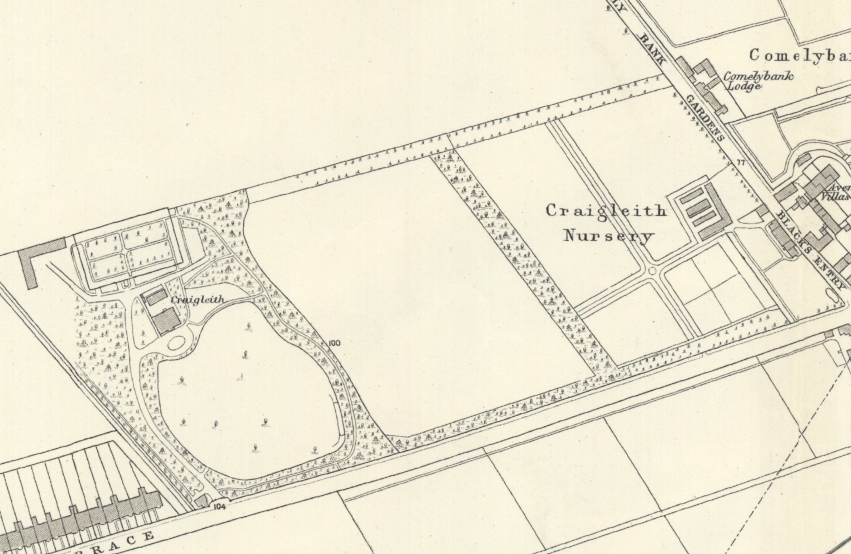
Hermitage were one of the principal users of this short-lived ground, while a match in October 1882 between City Artillery and Northern was played here, resulting in a 5-4 win for the Artillery team.
Hermitage appear to have only been active between 1882 and 1883, and also played some matches at Davidson’s Mains but from their reported scorelines both their first and second XIs were rarely beaten.
By 1884 Dean Rangers were the regular team playing at Craigleith and like Hermitage fielded both a first and second XI in matches but by the late 1880s there were no reported instances of matches being played at Craigleith and it was no surpise when the Victoria Hospital for Consumption, later the Royal Victoria Hospital, was established on the site in 1894.
Sir Robert William Philip, a Govan-born pioneer in the treatment and control of tubercolosis, founded the hospital as a sanitorium. It was designed to work in tandem with the first TB dispensary clinic in Bank Street, opened some six years earlier by Sir Robert.
Stockbridge Public Park
From at least the 1860s, the area we now know as Comely Bank comprised one vast park, known as Stockbridge Public Park. If you were to walk from Comely Bank Place, cross Comely Bank Avenue and continue along Comely Bank Terrace past the Dean Bowling Cub and across Learmonth Place and onto Comely Bank Grove, you would have walked, roughly, the breadth of the original park.
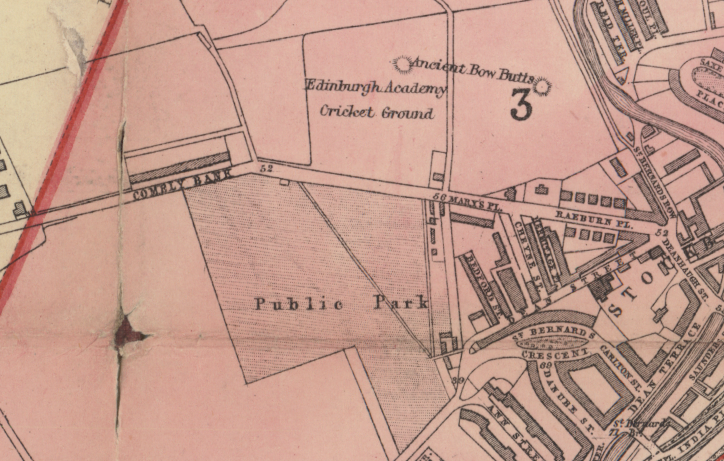
There were already residential houses in the area by 1817, and the land was originally part of the estate belonging to Sir William Fettes (whose bequest led to the establishment of Fettes College).
Builder Sir James Steel bought the 33-acre site in 1894 and constructed high-density, high-quality tenement buildings. Construction continued until after his death but the First World War halted work and building was not completed until into the 1930s.
Unsurprisingly, because of the timeframe, most teams that played here were shortlived outfits active in the 1870s and 1880s, although St Bernard’s played on this ground between 1878 and 1880, while 3rd Edinburgh Rifle Volunteers (the earlier incarnation of St Bernard’s) were also based here for a time.
Among the teams to play at Stockbridge Park during their brief existence were Albert, Adventurers, Beavers, Belgrove, Brunswick, Cumberland, and Fountain. Lothian Athletic were one of the last teams to play here, in 1891/92 while shinty or camanachd was also played here on occasion.

It would be nigh-on impossible to list every team who played at Stockbridge Park. As discussed in other articles, teams often played wherever there was space and moved around accordingly. For some teams, losing their regular playing field would have spelled disaster. For others, they simply moved on to another park and kept going.
Certainly at one point in the 19th century Stockbridge Park had a four-concurrent-games limit, meaning that clubs made homeless by the prohibition of football on the Meadows, were left with few options for playing matches.
Some inevitably folded while others just about managed to keep going playing wherever they could find space.
Inverleith Park
Another large public park ideal for hosting several game of football at the one time and one of the few grounds where, more than 100 years on, football is still played at some level.
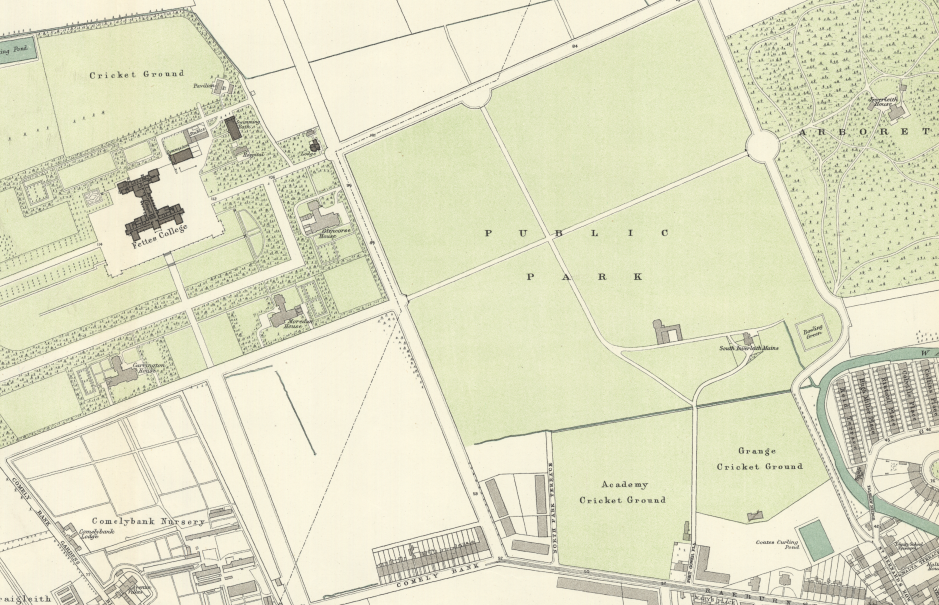
Lothian Strollers played Leith Fort at Inverleith Park in September 1892 while the following month a series of fixtures took place including North-Western v Niddrie Bluebell, Dalry Albion v Hanover, Leven Thistle v Grove Athletic, and Cheyne Athletic v Celtic Strollers.
Most, if not all, of the teams playing here were of a junior level and organised football up to amateur and juvenile level was played here until 1942. Such fixtures as Tollcross Night Staff v Jackson’s, Inverleith Wednesday v Edinburgh Windsor, and Bomb Disposal Section v B.R. United took place on one of Inverleith’s nine available football pitches.
In March 1900 it was proposed to build a cloak-room for skaters, store rooms for model yachts, a football pavilion, and a “covered space for the storage of goal posts, ladies lavatory etc.”, according to the Edinburgh Evening News. The South Inverleith Mains farm buildings and cottage were earmarked for conversion.
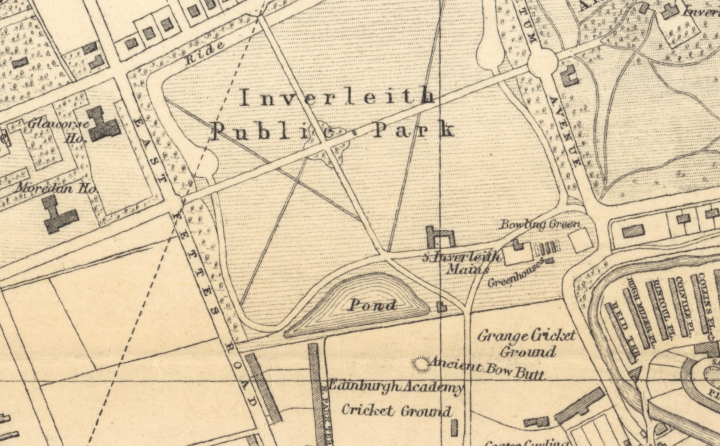
The Scottish Football Union (now the Scottish Rugby Union) bought land at Inverleith in 1897 and in doing so became the first of the home nations to own its own ground. That the first rugby internationals to be played in Scotland all took place on cricket fields – such as Edinburgh Academy’s Raeburn Place ground and Hamilton Crescent in Glasgow – is a neat parallel to the football matches that we know were played on the same site as cricket grounds around the same time.
The Academy staff grew to resent the arrangement however. The pitch was in near-constant use by school pupils including at the weekend, with rugby internationals fixed for Monday afternoons, and the groundstaff had little time to prepare the pitch for the internationals.
The SRU in its initial guise as the Scottish Football Union was founded in 1873 in Glasgow, with the International Rugby Board following in 1886, although England refused to join with Scotland, Wales, and Ireland until 1890.
There was a growing acceptance that the rugby teams could not maintain their use of cricket grounds, hence the SFU purchasing land at Inverleith towards the end of the 1890s. Powderhall was used for two internationals against Ireland and England while the Inverleith ground was prepared.
Between 1899 and 1925, when Murrayfield was opened, Scotland played international rugby games at Inverleith… but not in the public park as we know it today. No; matches took place at the ground currently used by Stewart’s Melville RFC on Ferry Road.
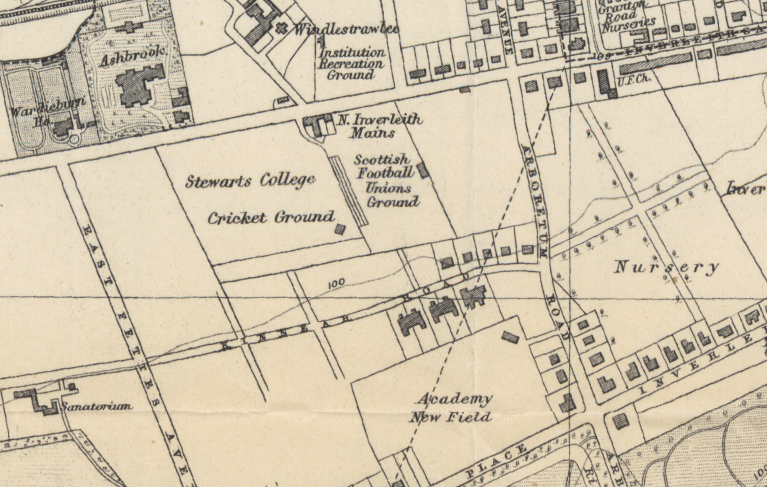
As with most sports grounds, Inverleith was used by the military during the First World War and not properly maintained so by 1919 the ground was in a sorry state. Added to that, the growing popularity of rugby meant Inverleith could not meet the demand for stand seats while western-based clubs were demanding more internationals be played in Glasgow, although somewhat ironically the only suitable venue in the city was Hampden Park, home of Queen’s Park football team.
By the end of 1922 the SFU had purchased 19 acres of land at Murrayfield from the Edinburgh Polo Club. Two years later they changed their name to the Scottish Rugby Union and played the last international match at Inverleith on January 25, 1925 beating France 25-4.
Around the same time that the SRU was vacating Inverleith, the prospect of removing the allotments from Inverleith Park was suggested. According to The Scotsman, St Bernard’s Ward Councillor Nelson revealed in October that discussions were under way over the purchase of land “at present occupied by the Edinburgh Borderers near the gasworks“. This was Broom Park in Granton.
Cllr Nelson also claimed that “every week there were 30 teams of growing boys would could not get fields to play upon”. Taking over Broom Park would, it was hoped, add four or five new pitches. For whatever reason, however, the plan does not appear to have come to fruition.
As for football in Inverleith Park, it grew to such an extent that there was a clamour for more pitches to be marked out by the early 1930s but it was felt that creating more pitches could have an adverse affect on the existing ones.
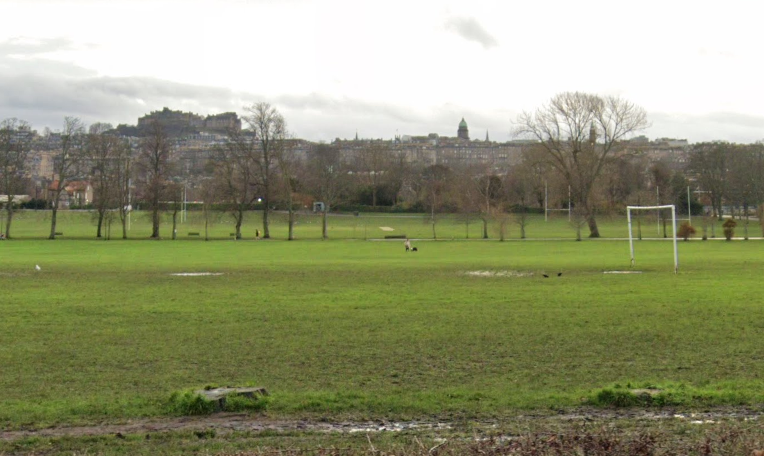
Football is still played in Inverleith Park – I remember playing at least one schools game on the slopey pitch next to Inverleith Place in the early 2000s – but passers-by are more likely to see rugby or cricket played in the park.
